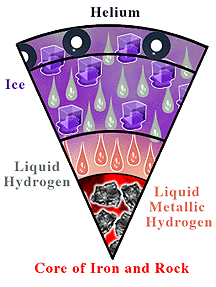This is a drawing showing the composition of the interior of Saturn.
The Composition of Saturn's Interior
The composition of Saturn's interior is primarily that of simple molecules such as hydrogen and helium, but there is also ice of ammonia, ice of methane and water ice.
Thus under the cloud layers, when the pressure of the interior becomes high enough, the hydrogen of which Saturn is made transforms to liquid hydrogen, which gradually transforms further to liquid metallic hydrogen.
Compared to Jupiter, Saturn does not have as much metallic hydrogen, but there is more ice. Because the magnetosphere comes from the metallic layer, this means that Saturn has a smaller magnetosphere than does Jupiter.
At the far interior of Saturn are to be found the more heavier, rocky and metal elements such as silicates and iron. These form the core of Saturn.
You might also be interested in:
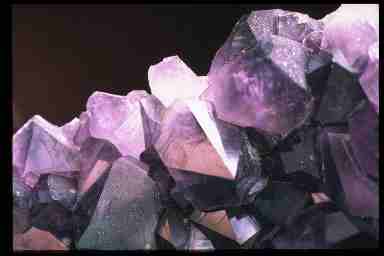
Minerals occur naturally on rocky planets and form the building blocks of rocks. They are non-living, solid, and, like all matter, are made of atoms of elements. There are many different types of minerals
...more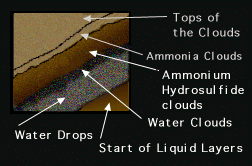
There is no surface to the giant planets, only a gradual transition from the atmosphere, as depicted in this drawing. The hydrogen and helium of which Saturn is mostly composed change to liquid form under
...more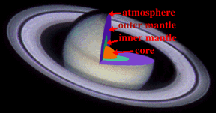
The Giant planets do not have the same layered structure that the terrestrial planets do. Their evolution was quite different than that of the terrestrial planets, and they have less solid material inside.
...more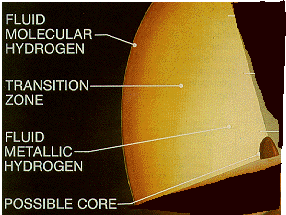
The first liquid layer inside Saturn, immediately under the atmosphere, is the liquid hydrogen layer. The hydrogen atmosphere becomes thicker and thicker, a fog with more and more liquid hydrogen droplets,
...more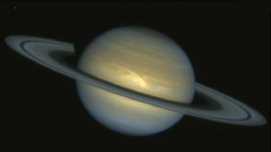
The most important motions in the atmosphere are winds. The major winds in Saturn's atmosphere are the zonal winds which are composed of alternating belts and zones flowing in opposite directions. Belts
...more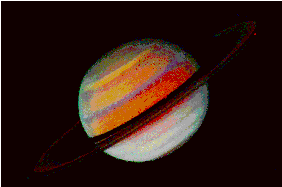
The striped cloud bands on Saturn, like Jupiter, are divided into belts and zones. In a belt, the wind flows very strongly in one direction only. In a zone, the wind flows very strongly in exactly the
...more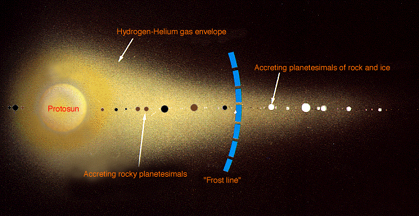
The position of the planets in the solar nebula greatly affected their 1. size and 2. composition. This is because of the effect of how cold it was in the nebula. 1. The nebula was a lot warmer close to
...more
